Stationary Phases for Planar Separations — Plates for Modern TLC
LCGC North America
The authors provide the latest information on new stationary phases for modern TLC and high performance TLC (HPTLC), along with helpful hints on how to get the most out of this flexible form of chromatography.
Thin-layer chromatography (TLC) is a most flexible and versatile chromatographic technique and therefore remains an indispensable tool for many applications. Applications range from monitoring of chemical reactions, comparison of fractions, and preparative separations to qualitative analyses such as identification of raw materials, tests for adulterations, and detection of biological activity to demanding quantitative determinations including assays, impurity profiling, and cleaning validation. In addition to traditional TLC plate development in an enclosed tank, there are also gradient and even forced flow techniques now available. The variety of stationary phases for planar separations is quite large, and it would be difficult to cover the subject comprehensively in this column. Therefore, in the present coverage, we will focus only on TLC plates used in the state-of-the-art qualitative and quantitative high-performance separations. For a more general approach, we recommend the corresponding chapters of the books edited by Sherma (1) and Nyiredy (2). Previous issues of LCGC have covered various aspects of modern TLC (3–7). This present contribution will serve to bring readers up to date on the latest developments in stationary phases.
Modern TLC is a powerful, reliable, and GLP–GMP (good laboratory practices–good manufacturing practices) compliant analytical technique that depends strongly on the commercial availability of high-quality, precoated plates. For many years, such plates have been on the market, featuring different formats, stationary phases, binders, and supports. Worldwide sales are increasing steadily, and users find it difficult to decide which of the many TLC products to select. This month's installment of "Column Watch" provides an overview of modern plates for TLC, their properties, applications, and performance from a theoretical and also a practical point of view. Although much lower in cost, self-made plates usually cannot compete with commercial plates with regards to stability, performance, homogeneity, and batch-to-batch consistency.
There are a number of official TLC regulatory methods, for example, in the international pharmacopoeias, the food laws, and in the collection of official methods of AOAC International. Many of those methods are rather old and their description of the TLC plate is often inadequate: "Use a plate coated with a suitable silica gel." Even though in official methods, a general suitability test can be given, it still remains difficult to select the proper plate because the expected results are not always precisely described. Therefore, a secondary focus of this article is on the important features of modern TLC plates, which affect the reproducibility of the chromatographic experiment.
Theoretical Considerations
Types of plates:
Format, support, layer, and binder
: Precoated TLC plates on a glass support are available in numerous formats, of which 20 cm × 20 cm usually is considered the standard for classical TLC. Glass plates are very sturdy and can be developed in vertical and horizontal mode without bending, thus ensuring consistent movement of the mobile phase on the plate. They are fully inert when used with most solvents and derivatizing agents and therefore are considered universally applicable. The optimum separation (migration) distance on these TLC plates is 12–15 cm. If only a few samples are to be separated at a time on the same plate, smaller formats such as 10 cm × 20 cm or 5 cm × 20 cm (20 cm in the direction of development), which also accommodate the optimum migration distance, are available. If optimum separation efficiency is fairly unimportant (for example, if the sample contains only one or very few components), developing distance can be reduced to about 8 cm and the plate format 20 cm × 10 cm (or fractional plates as small as 2.5 cm × 10 cm) might be sufficient.
For various reasons, plastic- or aluminum-backed plates (probably better called foils or sheets) also have become popular. These plates are usually less expensive than glass plates and can be cut conveniently into any size. When handled properly, their performance is comparable to that of glass plates, but TLC sheets require much more attention during sample application, chromatogram development, and particularly during derivatization. These precautions are necessary because of their inherent flexibility and somewhat limited tolerance to chemicals and heat.
At the end of the 1970s, adsorbents for high performance thin layer chromatography (HPTLC) were introduced to the market. The standard format of HPTLC glass plates is 10 cm × 10 cm. The optimum separation distance on such plates is 6 cm. If many samples must be separated on the same plate, the 20 cm × 10 cm format is available (10 cm in the direction of development). HPTLC layers on aluminum sheets (20 cm × 20 cm or on rolls) can be purchased at a lower cost. Like their TLC equivalents, the HPTLC sheets are less robust.
The thickness of precoated layers is usually 150–250 μm. For trace analyses, thinner layers of 50–100 μm offer the advantage of increased sensitivity. Although one would expect that the layer's support does not affect the chromatographic result, it should be noted that small differences still can occur. If exactly the same silica gel is used, these effects are predominantly due to the different binders used to provide layer stability. The binder also can influence substance detection based upon color reactions. Traditionally used binders include gypsum, carboxymethylcellulose, and starch. These resulting layers are soft and not very durable. The latter two binders are not suitable for detection based upon charring reactions. For example, a typical method to detect colorless zones is to spray the developed plate with dilute sulfuric acid and then heat the plate to carbonize the separated analytes that show up as dark brown zones. Obviously, organic binders will themselves be affected and thus render it difficult to detect weak zones. Most modern precoated plates feature a polymeric organic binder such as polymethacrylate. The layers are much harder and do not suffer during packaging, shipping, and storage.
Many commercially available plates feature a fluorescence indicator F254. This indicator is a manganese-activated zinc-silicate and emits green light when excited at 254 nm. Another indicator (acid-stable alkaline earth tungstate, F254s) emits pale blue light. It generally is assumed that the indicator, which is only present at very low amounts (about 2%), does not affect chromatography, but in certain cases, differences in TLC migration behavior due to the presence of these indicators can be seen.

Figure 1: Separation of flavonoids of St. Johns Wort on (a) TLC and (b) HPTLC plates. Stationary phase: silica gel 60; mobile phase: 100:25:10:10:11 (v/v) ethyl acetate-methylene chloride-formic acid-acetic acid-water; visualization with Natural Products reagent, UV 366 nm. Note: for better comparison, the HPTLC plate is shown magnified two times compared with the TLC plate.
TLC versus HPTLC: HPTLC materials are characterized by smaller average particle size (5 μm) and a narrow size distribution (2–10 μm). Layers are more homogenous and have a smoother surface and higher separation power than conventional TLC plates. Used for quantitative determinations, HPTLC plates achieve lower detection limits. This is due to the lower background noise during the densitometric measurement as well as the fact that separated zones are more compact. Table I and Figure 1 compare both types of plates.
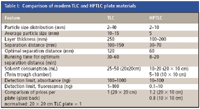
Table I: Comparison of modern TLC and HPTLC plate materials
Although slightly higher in price, HPTLC plates will pay off through significant savings in cost for solvents and analysis time. A typical pharmacopoeial method for identification requires 45–60 min for development on TLC plates. A much better separation can be achieved on an HPTLC plate in only 8–20 min without changes to the mobile phase. Separation carried out on a 20 cm × 20 cm TLC plate can be transferred to a 10 cm × 10 cm HPTLC plate by reducing the length of applied bands (or size of spots) to one half and reducing the sample volume to about one fifth. Thus, on a 20 cm × 10 cm HPTLC plate, twice the number of samples can be separated compared with a traditional plate. Only half the amount of mobile phase and about one third of the time for development is required.
The Flow of the Mobile Phase
In TLC, the mobile phase is moved by capillary forces at the position of the solvent front. While these forces are constant, the resistance of the wet portion of the plate against the resulting flow grows with increasing developing distance. Consequently the velocity of the mobile phase decreases as the plate develops (see Figure 2). Having a denser packing of smaller particles, thus greater resistance, HPTLC layers support short-developing distances only.

Figure 2: Relationship of developing distance and the developing time on HPTLC silica gel 60 (experimental values). Mobile phase: 5:95 (v/v) ethyl acetate-toluene.
In Figure 3, the separation of chamomile oil on HPTLC silica gel is presented. Based upon the substance pair at Rf 0.4–0.5 (see arrow) in the chromatograms in Figure 3a, resolution appears to increase as the developing distance is extended. However, if the chromatograms are put on the same scale (Figure 3b), it is seen that the relative position of the two components does not change significantly, while resolution goes through a maximum at 6 cm developing distance. Generally, the Rf values decrease with extended developing distances. This effect can be explained with the increased loading of the plate with volatile components of the developing solvent (plate conditioning). The visual impression can be supported by comparison of the analog curves on the same scale (Figure 3c).

Figure 3: Separation of chamomile oil on HPTLC silica gel 60: (a) increasing developing distance (3-8 cm), (b) chromatograms from (a) scaled to the height of track 4 (developing distance of 6 cm), and (c) analog curves of chromatograms over (dashed) 4-cm and (solid) 6-cm developing distances. Mobile phase: 5:95 (v/v) ethyl acetate-toluene.
Stationary Phases
No other chromatographic technique has such a broad array of stationary phases available as does TLC. Inorganic substances like aluminum oxide, silica gel, or kieselguhr are available as precoated layers as well as bonded phases on silica gel basis, and organic substances including native and modified cellulose and polyamides. The properties of commercial plates can be further modified by impregnation (see below). This diversity makes various separation mechanisms possible, including adsorption, partition, complex formation, and ion exchange. However, most thin-layer chromatographers perform separations using adsorption chromatography in the normal phase mode with silica gel as stationary phase.
Silica gel: Silical gel is the most versatile of all stationary phases for TLC. The chemical functionality on the surface consists of silanol groups, Si-OH (free, vicinal, and associated), and siloxane structures, Si-O-Si. The Si-OH group allows very specific interaction with sample molecules belonging to a variety of chemical substance classes. Retention is primarily based upon the number and type of functional groups of the analytes and in a simplified approach, it parallels their polarity. During the manufacturing process, a number of chemical and physical parameters of silica gel are controlled, all of which affect its properties as an adsorbent. The typical material consists of small, totally porous particles (average pore volume 0.66 mL/g). The average pore size is 6 nm, equal to 60 ì which is the reason for the common name "Silica Gel 60." The large specific surface of 400–600 m 2/g makes silica gel an excellent adsorbent. Unfortunately, this causes a very high affinity to water molecules in the surrounding environment. High relative humidity decreases activity and generally weakens retention. The chromatograms in Figure 4 illustrate the broad range of application.

Figure 4: Separation on HPTLC silica gel 60: (a) essential oil of lavender, (b) phospholipids, (c) flavonoids of Ginkgo biloba, and (d) alkaloids of goldenseal. For experimental details, please contact the authors.
Modern HPTLC plates generally use broken particles (irregularly shaped). There are also special plates featuring spherical particles, similar to those particles used in HPLC. Developing times on such plates are about 20% shorter, which makes them a good choice for use in automated multiple development (AMD) (8).
Reversed and polar-bonded phases: For separations that cannot be achieved on bare silica gel, a great variety of HPTLC plates with reversed and polar bonded phases is now available commercially (Table II). Reversed phases such as C8 and C18 have similar separation characteristics as the corresponding phases most commonly used in HPLC. However, the water content of the TLC mobile phase cannot exceed 40% due to the limited wettability of the pores responsible for capillary action. If higher water contents are necessary, wettable plates "RP 18w" can be used. They feature a low carbon load and more residual silanol groups on the surface.
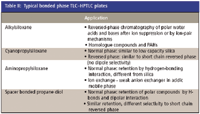
Table II: Typical bonded phase TLC-HPTLC plates
Of the polar-bonded phases for HPTLC, diol-modified silica gel is most similar in selectivity to unmodified silica gel. Retention usually is weaker, and the separation is not affected by changes in the relative humidity. Aminopropyl bonded phases are particularly suitable for separation of carbohydrates and their derivatives (9). Separated carbonyl compounds can be detected easily on the aminophase, because they form blue fluorescing adducts upon heating. Cyanopropyl-modified silica gel is being used more and more for normal phase separations, using hexane mixed with polar organic modifiers as mobile phase. The same material is also suitable in reversed phase mode with aqueous mobile phases (10). In this way, the same sample can be investigated, achieving opposite elution orders, a feature that is suitable for the determination of related substances occurring in trace amounts.
Other stationary phases used in TLC and HPTLC: In addition to silica gel–based stationary phases, cellulose is used as a coating on HPTLC plates. Cellulose is suitable for separation of very polar substances such as catechins, food colors, and amino acids. Further specialty plates, applicable for specific separation tasks, can be found only as TLC plates. They include chiral stationary phases, different polyamides, acidic, neutral, and basic aluminum oxide, mixed stationary phases (for example, cellulose and silica gel), and even phenyl-bonded phases. Detailed coverage of these specialty plates is beyond the scope of the present article.
Practical Aspects of TLC and HPTLC
Suppliers:
HPTLC and TLC plates are supplied by several manufacturers (Table III). Without making any statement about "absolute" quality, it must be acknowledged that plate properties vary from one manufacturer to another, even if the same "HPTLC silica gel 60" is compared. Therefore, in general, plates may not be interchanged from one supplier to another without modification of the method if reproducible results are to be achieved. In some cases, even products of the same manufacturer such as plates with or without a fluorescent or UV indicator, or with a different indicator, glass plates or aluminum foils, or different layer thickness, can cause somewhat different results. Equivalence of plates for a given method should be established during method validation.
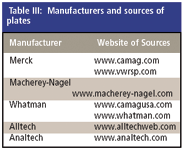
Table III: Manufacturers and sources of plates
Handling of plates: Storage and general handling: TLC and HPTLC plates represent an open system, which is affected by the surrounding atmosphere. Moisture, dust, and fumes are absorbed readily if plates are not protected during storage. Due to the off-line principle in TLC, manual handling of the plate between the individual steps (application, development, derivatization, evaluation) is necessary, and special care must be taken to avoid damage to the sensitive layer. It is advisable to hold plates by their edges and never touch the sorbent layer. If needed, the developed plate should be handled on the margin above the solvent front. Impurities on the plate not only accumulate from the lab atmosphere, but also from packaging material such as shrink-wrapping foil. When plates are stored in the original polystyrene foam box, the plate on the top of a stack should be kept face down. While for most qualitative analyses, plates are typically used "out of the box" without any pretreatment, it is important to consider a standardized cleaning procedure if the analytical method must be validated (stability test, quantitation), and reproducible results are required. Precleaning also is advisable in case "dirt fronts" are seen (dark solvent fronts under UV on plates with UV indicator) after chromatography.
Precleaning: To remove impurities from the sorbent layer, prewashing or predevelopment is recommended. During prewashing, the plate is immersed into a large volume of isopropanol and soaked for several hours. During this time, impurities on the plate diffuse into the washing liquid. After drying the plate in a clean environment, the procedure can be repeated with fresh solvent. A much easier task to perform is the predevelopment of the plate. Here, the plate is developed with a strong solvent to its upper edge. In the case of a silica gel plate, methanol often is recommended for use but might not be the most efficient cleaning agent if the contaminants are rather nonpolar. It is not a good practice to predevelop with a portion of the actual mobile phase. In this case, secondary fronts can be established, which could collect impurities and are difficult to remove during the chromatography. The cleaned plate is dried (and activated) in an oven at 120 °C for 20–30 min. In a dust and fume-free environment (for example, a large, empty desiccator), the active plate is cooled down to room temperature and equilibrated with the relative humidity of the laboratory atmosphere. Figure 5 shows the effect of prewashing on plates, which are contaminated with impurities from the packaging material.
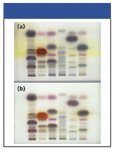
Figure 5: Effect of prewashing on plate background when analyzing some essential oils: (a) no prewashing and (b) prewashing with methanol. Mobile phase: 95:5 (v/v) toluene-ethyl acetate, derivatization by dipping in anisaldehyde reagent, followed by heating at 100 ðC for 3 min.
Activation: Upon storage and handling, silica gel will interact with the surrounding laboratory atmosphere, thus adsorbing water vapor. This affects the activity of the plate, which is inversely proportional to both the relative humidity and the Rf value of the analyte. However, because water adsorbed on the surface of the stationary phase can influence selectivity of a separation also, this statement cannot be generalized. It is possible that humidity–activity changes affect different compounds to different extents and can affect reproducibility of the TLC experiment. Heating a silica gel plate to 120 °C in an oven can maximize activity. At that temperature, adsorbed water is completely removed from the surface. High activity of a silica-gel plate is not necessarily desirable, because it can cause tailing and even chemical reactions with the sample. During sample application, the stationary phase is again in contact with the relative humidity of the surroundings. A new TLC developing chamber will soon be introduced to the market. This new chamber can be used to modify the activity of the plate (see www.camag.com). In any case, it is advisable to record the actual relative humidity and the temperature during chromatogram development.
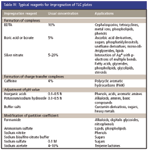
Table IV: Typical reagents for impregnation of TLC plates
Impregnation: The chromatographic performance of TLC and HPTLC plates can be altered significantly by impregnation. Impregnation is performed primarily by dipping the plate in a 5–10% solution of low-volatile impregnation reagent, which is dissolved in a highly volatile solvent. Drying the plate in an oven at 100–120 °C for 30 min evaporates the solvent. Table IV gives an overview.

Ronald E. Majors
Conclusion
High quality of the TLC and HPTLC plates is the fundamental requirement for reproducible and reliable planar separations. However, advances in plate technology can be taken advantage of fully if all steps of the TLC process are performed using state-of-the-art instrumentation (11).
References
(1)
Handbook of Thin-Layer Chromatography
, 3rd ed., J. Sherma and B. Fried, eds. (Dekker, New York, New York, 2003).
(2) Planar Chromatography: A Retrospective View for the Third Millenium, Nyiredy Sz, ed. (Springer, Budapest, Hungary, 2001).
(3) J. Donovan, M. Gould, and R.E. Majors, LCGC 5(12), 1024–1028 (1987).
(4) H.E. Hauck and M. Mack, LCGC 8(2), 88–96 (1990).
(5) R.E. Majors, LCGC 8(10), 760–766 (1990).
(6) J.C. Touchstone, LCGC 11(6), 404–411 (1993).
(7) C. Weins and H.E. Hauck, LCGC 14(6), 456–464 (1996).
(8) E. Reich, "Instrumental thin-layer chromatography," in Handbook of Thin-Layer Chromatography, 3rd ed., J. Sherma and B. Fried, eds. (Dekker, New York, 2003).
(9) H. Jork, W. Funk , W. Fischer, and H. Wimmer, Thin Layer Chromatography, vols. 1a–1b (VCH Verlagsgesellschaft mbH, Weinheim, Germany, 1990).
(10) T. Omori, M. Okamoto, and F. Yamada, J. High Resol. Chromatogr. 6, 47–48 (1983).
(11) E. Reich and A. Blatter, "Thin Layer Chromatography: Instrumentation," in Encyclopedia of Analytical Science, 2nd ed., Paul J. Worsfold, Alan Townshend, and Colin F. Poole, eds. (Elsevier, Oxford, U.K., 2005) pp. 91–99.
Eike Reich and Anne Schibli are with CAMAG Laboratories, Muttenz, Switzerland. Please direct correspondence to:eike.reich@camag.com.
Ronald E. Majors"Column Watch" Editor Ronald E. Majors is business development manager, Consumables and Accessories Business Unit, Agilent Technologies, Wilmington, Delaware, and is a member of LCGC’s editorial advisory board.
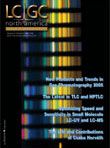
Investigating 3D-Printable Stationary Phases in Liquid Chromatography
May 7th 20253D printing technology has potential in chromatography, but a major challenge is developing materials with both high porosity and robust mechanical properties. Recently, scientists compared the separation performances of eight different 3D printable stationary phases.
Characterizing Polyamides Using Reversed-Phase Liquid Chromatography
May 5th 2025Polyamides can be difficult to characterize, despite their use in various aspects of everyday life. Vrije Universiteit Amsterdam researchers hoped to address this using a reversed-phase liquid chromatography (RPLC)-based approach.
New Method Explored for the Detection of CECs in Crops Irrigated with Contaminated Water
April 30th 2025This new study presents a validated QuEChERS–LC-MS/MS method for detecting eight persistent, mobile, and toxic substances in escarole, tomatoes, and tomato leaves irrigated with contaminated water.
University of Tasmania Researchers Explore Haloacetic Acid Determiniation in Water with capLC–MS
April 29th 2025Haloacetic acid detection has become important when analyzing drinking and swimming pool water. University of Tasmania researchers have begun applying capillary liquid chromatography as a means of detecting these substances.

.png&w=3840&q=75)

.png&w=3840&q=75)



.png&w=3840&q=75)



.png&w=3840&q=75)












